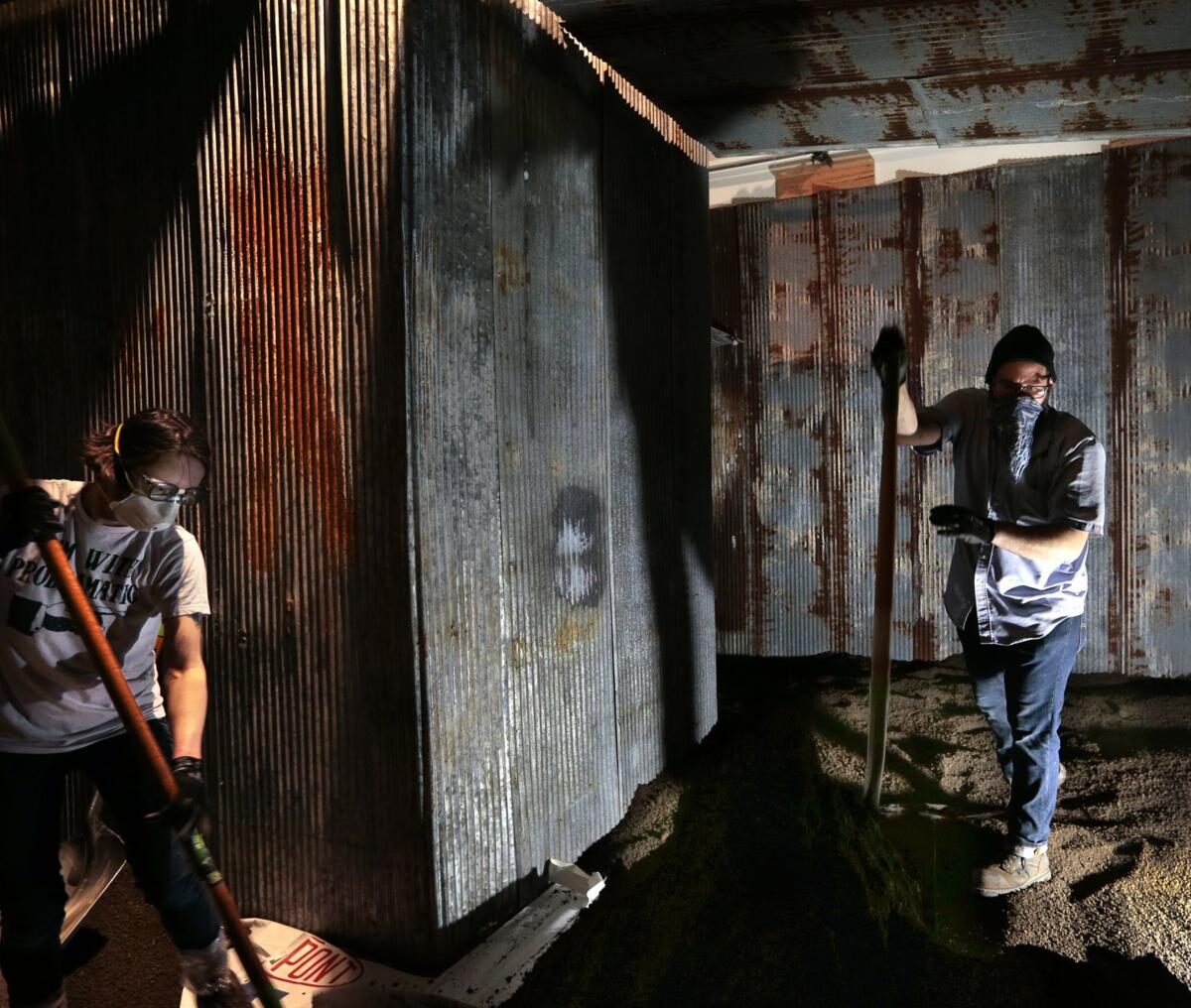Empty crates stand in CAM’s Receiving Area, stored there after the artwork they contained has been put on display. The room is filled with construction materials and meticulously labeled tool boxes, with a paint storage cabinet and a woodshop enclosed within. Jen Nugent leads me around the Staff Only area and into her office, similarly filled with miscellaneous exhibition materials. Jen is CAM’s registrar. After receiving her BFA in Fine Arts from Ringling College in Sarasota, Florida and her MFA in Sculpture from Temple University’s Tyler School of Art in Philadelphia, Jen divided time between artmaking and conservation work at libraries and art galleries. She became CAM’s registrar in 2019. Here she discusses her experience as a registrar and the role of art in contemporary discourse.
What is it like to be a registrar?
“Registrar” can mean totally different things at different institutions. At CAM, many of my tasks have to do with preparing for install season. We plan for each new exhibition season as far ahead as possible, but about half-way through the ongoing season is when I start working on the plan for deinstallation. Mainly this entails coordinating shipping, making sure packing is done correctly, that everything is insured, that pest management procedures are followed––things of that nature. It’s a lot of logistics and strange know-hows, but I like keeping busy. I enjoy it because it’s important and rewarding work. Every artist I’ve worked with has taught me something incredible. Christine Corday’s RELATIVE POINTS was the first exhibition I saw come down at CAM, and working with her was such a memorable experience. It was so warm and impressive. It was just a lovely introduction.
How do you make an installation happen? What are some safety concerns in the installation process?
It generally starts with the artist sending us the necessary information, but what they can tell us differs from case to case. For Liz Johnson Artur, because her exhibition is on loan from Brooklyn Museum, they sent a helpful reference sheet and a courier to oversee the process. It’s different for Derek Fordjour, because he hadn’t done an exhibition of this scale before. In his case there’s a lot more research and collaboration with his team; a lot of asking questions and thinking through every possible scenario.
There are many safety concerns, of course. If we’re in a dusty environment, make sure everyone has respirators. Height is important to keep in mind when someone is operating the scissor lift. When we are moving sculptures, make sure paths are clear and dimensions actually fit the space. All of CAM’s crew members are trained art handlers. I could go on forever.
What do you love about working at CAM?
Just being here is amazing. Working alongside such talented and amazing human beings, in a space that displays and protects our share of culture––it’s a pleasure and a privilege. My second favorite thing is all the work that we do––together––during the install period. We have a small staff, so everyone works together closely to make everything happen.
It takes a team for art to happen. On one level it’s the work it takes to put up an exhibition and display art, and the initiatives we take to generate productive discourse. On another, it’s the art-making process itself. Nowadays we don’t think about the artist as a solitary genius in the studio anymore. Artists are people who think and do and collaborate and participate in discourse. Art is a product of social interactions and political events and cultural legacies. There’s a lot that happens before art can be seen and appreciated. That’s where the magic happens, really.
—Alice Nguyen
